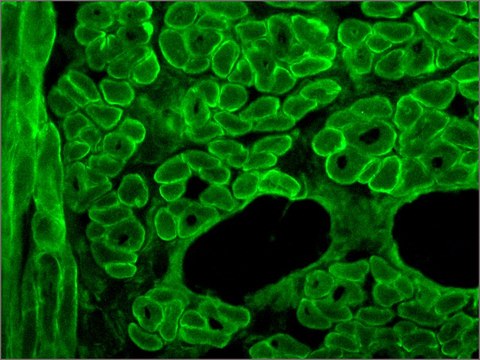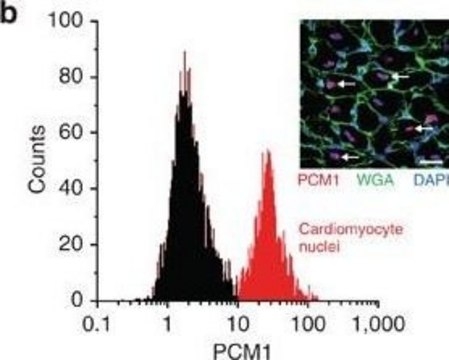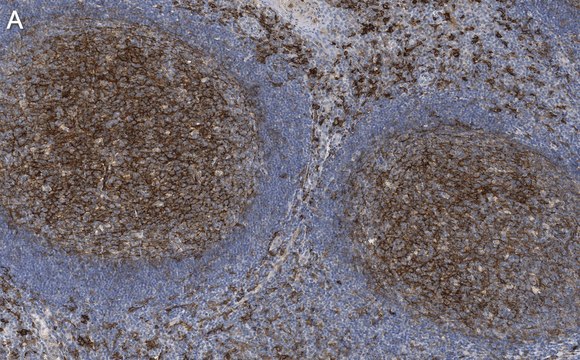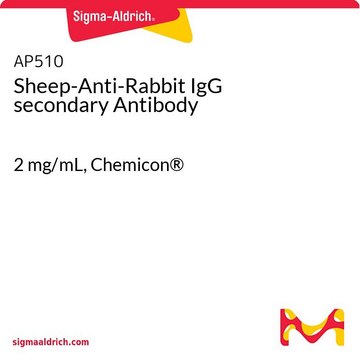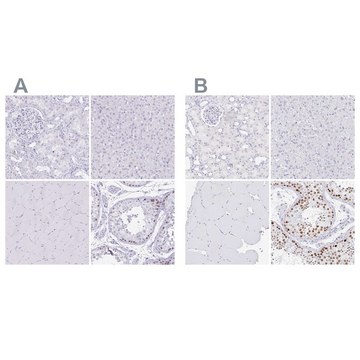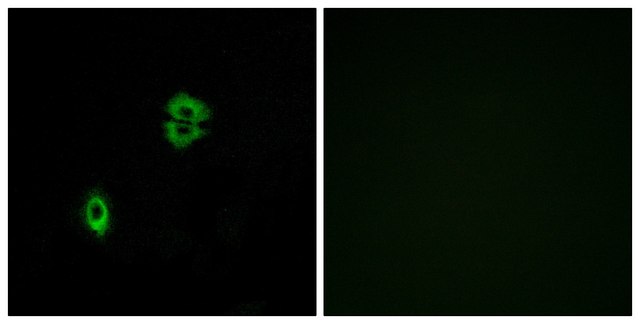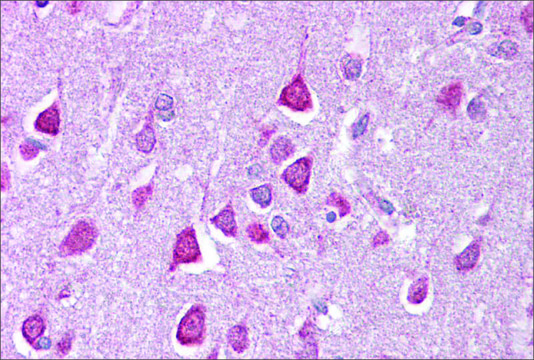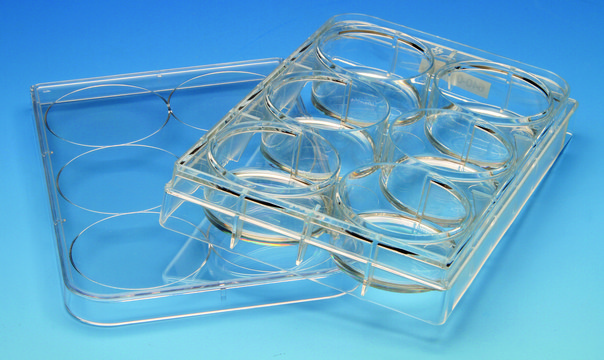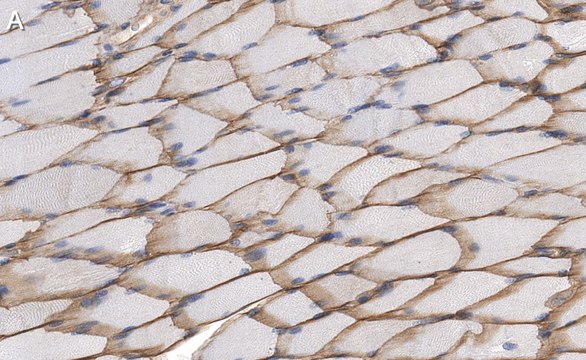MAB1692
Anti-Dystrophin Antibody
CHEMICON®, mouse monoclonal, 6D3
Synonym(s):
Anti-BMD, Anti-CMD3B, Anti-DXS142, Anti-DXS164, Anti-DXS206, Anti-DXS230, Anti-DXS239, Anti-DXS268, Anti-DXS269, Anti-DXS270, Anti-DXS272, Anti-MRX85
About This Item
Recommended Products
Product Name
Anti-Dystrophin Antibody, mid-rod, clone 6D3, culture supernatant, clone 6D3, Chemicon®
biological source
mouse
Quality Level
antibody form
culture supernatant
antibody product type
primary antibodies
clone
6D3, monoclonal
species reactivity
mouse, canine, human, rabbit, rat
manufacturer/tradename
Chemicon®
technique(s)
immunohistochemistry: suitable
western blot: suitable
isotype
IgG2a
NCBI accession no.
UniProt accession no.
shipped in
dry ice
target post-translational modification
unmodified
Gene Information
human ... DMD(1756)
Specificity
STAINING PATTERN:Light microscopy: continuous rim of labeling at the periphery of muscle fibers.
E.M. gold: close to the cytoplasmic face of the plasma membrane.
Western blotting: strong double bands at approximately 400 kD plus metabolites of lower molecular mass.
Immunogen
Application
undiluted - 1:20. Not recommended for use on paraffin embedded tissue.
EM Gold (Light fixation with 2% formaldehyde + 0.001% glutaraldehyde for 1 hour. 2.3M sucrose used as cryoprotectant.): use undiluted. 90 minute incubation at 25°C.
Western blotting: use 1:100-1:250.
Optimal working dilutions must be determined by the end user.
Protocol for Immunohistochemical use of MAB1692
1) Freeze muscle blocks in isopentane chilled in liquid nitrogen.
2) Cut 4 μm to 10 μm sections and air dry on slides coated with 0.5% gelatin containing 0.05% chrome alum.
3) Slides may be stored at -70 °C wrapped in cling film until required. If stored sections are used, allow sections to equilibrate to room temperature before unwrapping and proceeding.
4) Apply a 50 μL aliquot of primary antibody to sections (unfixed). Incubate for 1 hour at room temperature or 37°C.
5) Wash sections 3 x 10 minutes in phosphate buffered saline.
6) Apply a 50 μL aliquot of labeled second antibody. Incubate for 60 minutes at 25°C.
7) Wash sections 3 x 10 minutes in phosphate buffered saline.
8) Mount fluorescent sections in aqueous mounting media or visualize peroxidase label (DAB). Dehydrate, clean and mount peroxidase labeled sections for permanent preparations.
Metabolism
Muscle Physiology
Physical form
Storage and Stability
Analysis Note
POSITIVE CONTROL: Snap frozen normal human or rat striated muscle.
Legal Information
Disclaimer
Not finding the right product?
Try our Product Selector Tool.
recommended
Storage Class Code
12 - Non Combustible Liquids
WGK
WGK 2
Flash Point(F)
Not applicable
Flash Point(C)
Not applicable
Certificates of Analysis (COA)
Search for Certificates of Analysis (COA) by entering the products Lot/Batch Number. Lot and Batch Numbers can be found on a product’s label following the words ‘Lot’ or ‘Batch’.
Already Own This Product?
Find documentation for the products that you have recently purchased in the Document Library.
Our team of scientists has experience in all areas of research including Life Science, Material Science, Chemical Synthesis, Chromatography, Analytical and many others.
Contact Technical Service